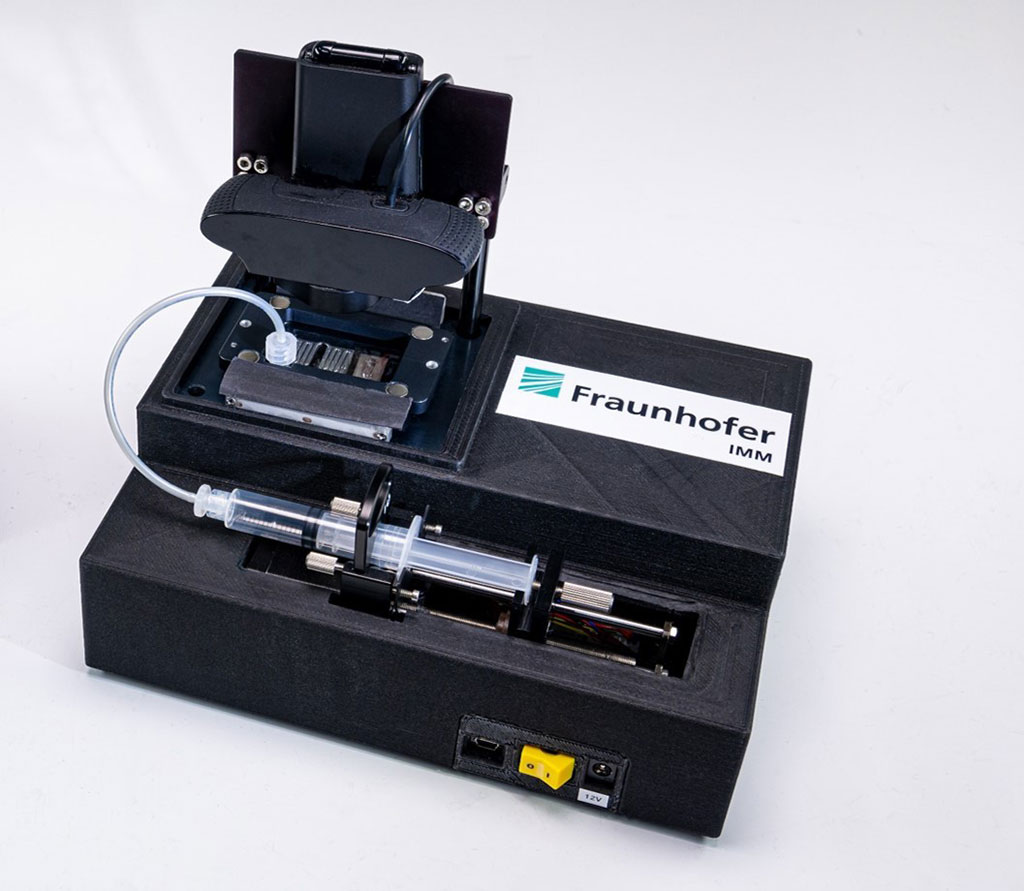Fast, Open and Digitalized PCR Platform Produces Results in 15 Minutes
Posted on 03 Nov 2022
SARS, Ebola, Zika and now COVID-19 – experts agree that the frequency of infectious diseases will rise in the future. Climate change, rapid urbanization, changing patterns of land use, global travel and increased contact between people and animals all contribute to the growing likelihood of epidemics – and even pandemics – occurring. To ensure that we are better equipped to fight pandemics, there is a need for highly sensitive, on-the-spot tests that can indicate the presence of infections as clearly as possible in just a few minutes and transfer the results directly to the decision-makers digitally. A team of researchers is developing a rapid test system that would combine the advantages of more sensitive PCR tests and cheaper, but less reliable, on-the-spot antigen tests that are sold in drug stores and supermarkets. The new tests will also be more affordable than the PoC (point of care) PCR rapid test systems that are currently on the market.
Cost-effective antigen tests that can be produced in large quantities cannot be made available immediately after an outbreak of a new infectious disease which could cause a pandemic. The development time needed for these tests is too long to contain or even prevent a pandemic. On the other hand, current PoC PCR tests are up to 30 times more expensive than antigen tests. Low production volumes, high investment costs, sophisticated logistics solutions and complex microfluidic structures are among the factors responsible for the high prices. As a result, they are not suitable for mass testing or for use at the PoC. Researchers at Fraunhofer Society (Munich, Germany) are currently developing a scalable, open and digitalized PCR test system as part of the OPEN-POCT project that will produce results in just 15 minutes.

The PCR methodology requires two temperatures. The reagents with the sample fluid must be heated and cooled, which is very time-consuming. The heating block in the PCR devices is initially heated to over 90 degrees (Celsius) so that the DNA strands can be separated. It is then cooled to around 60 degrees. After this, the virus genome is duplicated. One DNA strand becomes two and in the next stage two become four and so on. This allows the virus to be detected. To avoid the need for the long-winded process of constant heating and cooling, the research team used two different heat zones – one hot chamber and one cooler chamber. The sample fluid is pumped back and forth between them by means of a pump in the cartridge. The fluid moves from one heat zone to the other in the detection cartridge through loop-shaped microfluidic channels. As a result, it is stretched out, which gives it a large surface-to-volume ratio and, therefore, allows for rapid heat transport. This means that the system reaches the necessary temperature for the PCR process quickly and there is longer a need to constantly adjust the heat block to the two different temperatures.
The researchers’ preliminary tests with purified virus RNA were much quicker than standard PCR lab tests. The results were available after only 15 minutes, but the level of sensitivity stayed the same. The compact device, which is only 15 by 15 by 20 centimeters in size, has a simple design. In addition to the microfluidic cartridge and pump, it includes heating structures and a fluorescence camera as a detector. No expensive components are needed. Another advantage is the ability to rapidly adapt the OPEN-POCT platform for use with other viruses. The OPEN-POCT platform also allows for the digitalized, automated transfer of positive test results directly to the health authorities. To enable a pandemic to be contained quickly, it is not only necessary to overcome technical hurdles, but also to remove bureaucratic obstacles. This is only possible if the automated data transfer process uses secure data systems and includes the protection of personal data and general IT and data security features. The team plans to expand the digital transfer solutions to include a link with the Corona Warn-App, for example. The project partners have also drawn up a comprehensive white paper for decision-makers that covers diagnostic and data protection considerations and also regulatory issues.
“We aim to bring PCR testing out of the lab and into a rapid test system that can be used on the spot for large numbers of tests. This is why we are designing our solution as an open system to allow multiple manufacturers to produce the components, e.g., cartridges and reagents,” explained Dr. Christian Freese, researcher at Fraunhofer IMM. “In principle this is all about developing an administrative and regulatory ecosystem for a scalable, open, digitalized PoC PCR test system to detect infectious agents that could cause pandemics. The price of a test for one person must only amount to a few Euros.”
Related Links:
Fraunhofer Society













